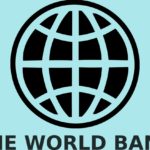KARACHI: World Bank has identified three main constraints that are directly affecting Pakistan exporters. These are the anti-export bias of its trade policy, the inadequate export promotion infrastructure, and an ambiguous regulatory framework around FDI.
The World Bank said that many factors affect competitiveness in Pakistan.
These include, among others, high costs of doing business, electricity availability at affordable costs, or access to finance.
The World Bank pointed out constraints that high duties on imports create an anti-export bias, considerably reducing the ability of Pakistan’s firms to integrate into global markets.
The structure of Pakistan’s taxes on imports displays two features that prevent firms from leveraging regional and Global Value Chains (GVCs) to sell Pakistan’s goods and services to the world, to increase productivity, and to create more and better jobs.
“First, Pakistan’s import duties are high – with a marked escalation: the average difference between tariffs on final goods and raw materials was 10.4 percentage points in 2016, and between intermediate goods and for raw material it was of 2.2 percentage points.”
The World Bank said that this creates an incentive for firms to focus on the local market, in which they enjoy higher profit margins due to the tariffs on the final goods, rather than innovating and venturing into competitive global markets.
“In fact, the policy response to the increasing trade deficit has been to increase import duties, which further increases the anti-export bias,” the World Bank added.
Second, duty suspension schemes for exporters that source intermediates from abroad work imperfectly. “It takes 60 days to get the scheme approved – double the time stipulated by law and clearing customs under the scheme takes between 5 to 10 days.”
In addition, the complexity of securing the scheme approval is such that only 3 percent of textile and apparel exporters use it, it continued.
Duty rebate schemes, instead, are more widely used – about 50 percent of textiles and apparel exporters use them, although more than half of the firms claim a waiting time of 250 days and more to receive the rebate.
The second most important issue discussed by the World Bank, stating that export promotion infrastructure is not aligned with international good practices.
Evidence collected through private sector consultations in Punjab, Sindh, Islamabad and Khyber Pakhtunkhwa also revealed that exporters lack support in terms of provision of export intelligence, which in other countries has effectively reduced the information frictions that new and small exporters face and that substantially increase their trade costs.
This has been validated by a recent assessment of the main export promotion agency in Pakistan, the Trade Development Authority (TDAP), conducted by the International Trade Center (ITC).
“ITC assesses the performance of TDAP at ‘below average’ in its latest benchmarking exercise of 2017, pointing to several challenges, including lack of support to value chain development, lack of client datasets, and client management systems, as well as lack of monitoring and evaluation frameworks for its interventions.”
Indeed, the existing support focuses on participation in trade fairs for well-established export sectors (textiles and apparel), rather than focusing on connecting new or potential exporters with global buyers, that tend to have been more impactful, according to international evidence. “Inadequate export promotion interventions underlie the little diversification of Pakistan’s export bundle as well as the low entry rates into exporting observed in the data.”
The World Bank said that the policy regime towards foreign direct investment increases the risks perceived by foreign firms.
With global trade being structured around Global Value Chains, a country’s success in boosting exports is inextricably linked with its ability in attracting FDI. “Pakistan’s record in FDI inflows is lackluster, with inflows averaging 1.5 percent of GDP between 2005 and 2017, compared to 6.1 percent of GDP in Vietnam over the same period.”
Part of the difficulties lie with the perception of security challenges in Pakistan, which discourages FDI inflows into the economy – indeed, an important challenge has been attracting clients or senior management from abroad to visit premises of multinationals in Pakistan.
However, policies have not helped either.
The investment regulatory framework shows inconsistencies between the Investment Law of 1976, which is relatively protectionist, and the Investment Policy of 2013, which is relatively more market friendly, although without the rank of a ‘law’.
These inconsistencies create uncertainty among foreign investors, reducing their incentives to incur substantial largely irreversible investments, and further constraining the realization of export potentials in Pakistan, the World Bank said.
The last fiscal year showed a record-high trade deficit in Pakistan, at USD 31.1 billion, contributing to a current account deficit of 6.1 percent of GDP.
The observed trade deficit resulted from the combination of consumption-led growth, that fueled demand for imports, and mounting constraints to export competitiveness.
Between 2005 and 2018, Pakistan’s merchandise exports rose from USD 16 billion to USD 23 billion, an increase of only 47 percent compared to an increase of 286 percent in Bangladesh, 563 percent in Vietnam or 193 percent in India.
“Its exports have been concentrated in a few products with little sophistication like textiles, apparel and rice.
“Its exporting firms remain small, when compared to those in peer countries, and there is little entry into and exit out of export activities.”
